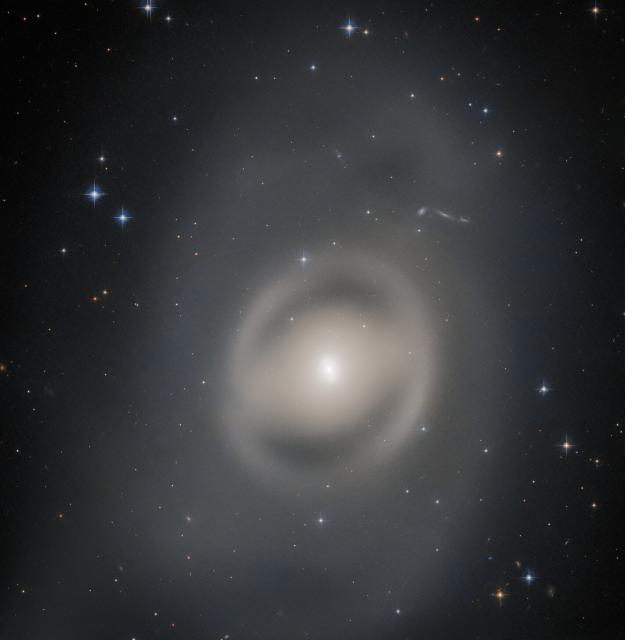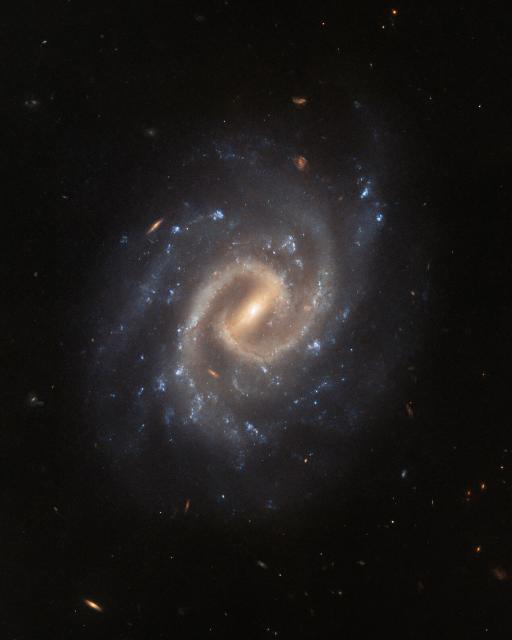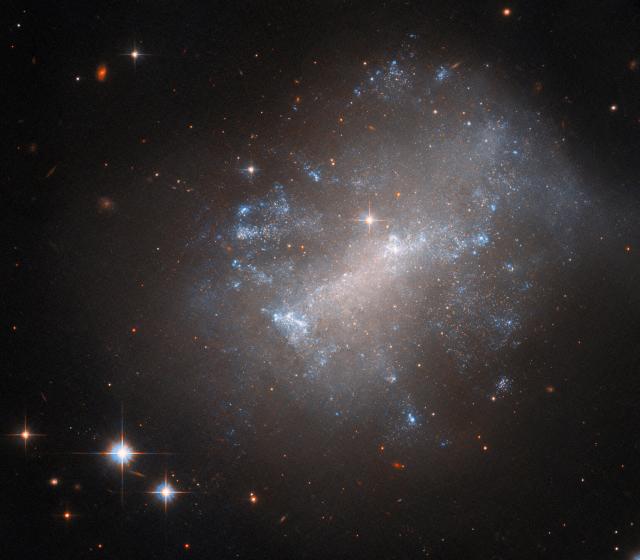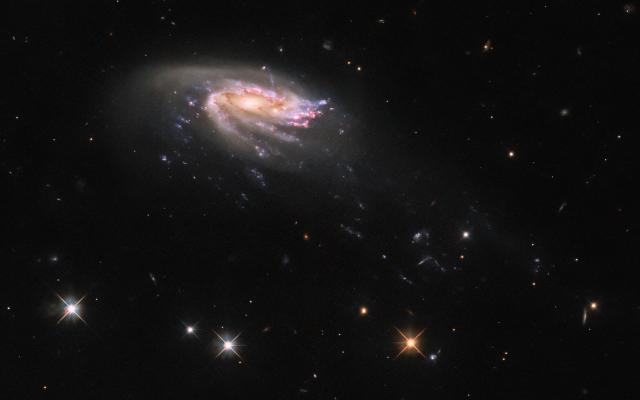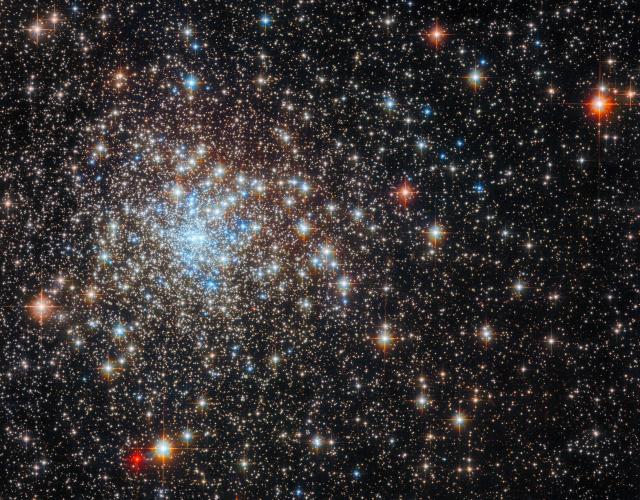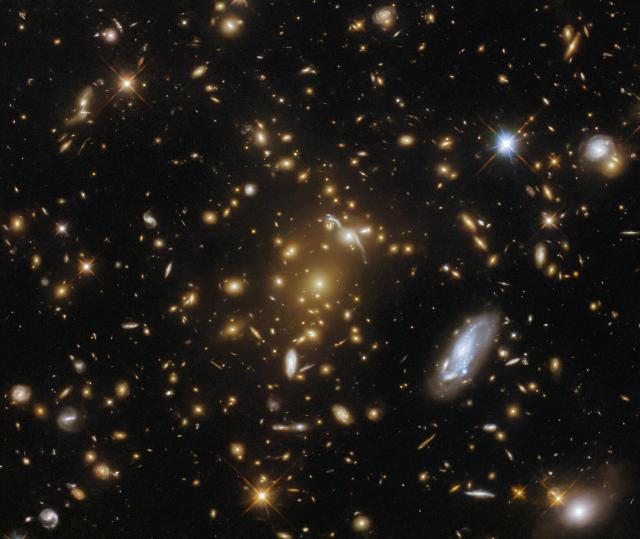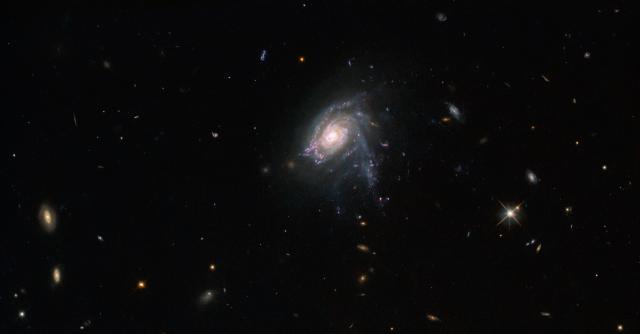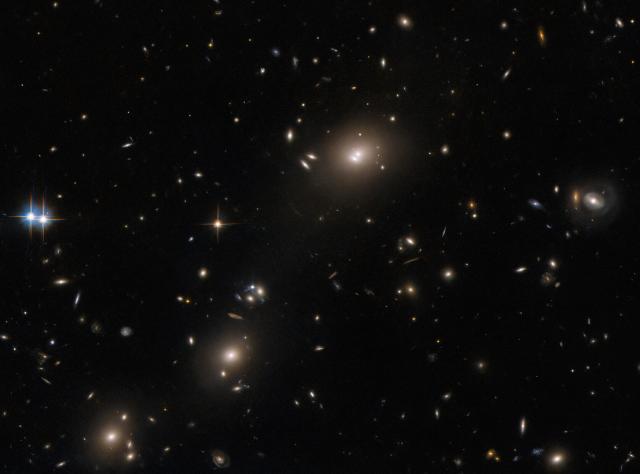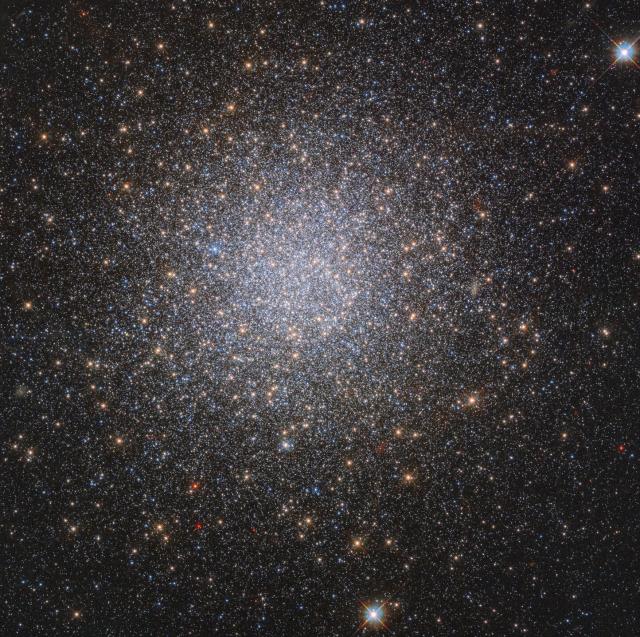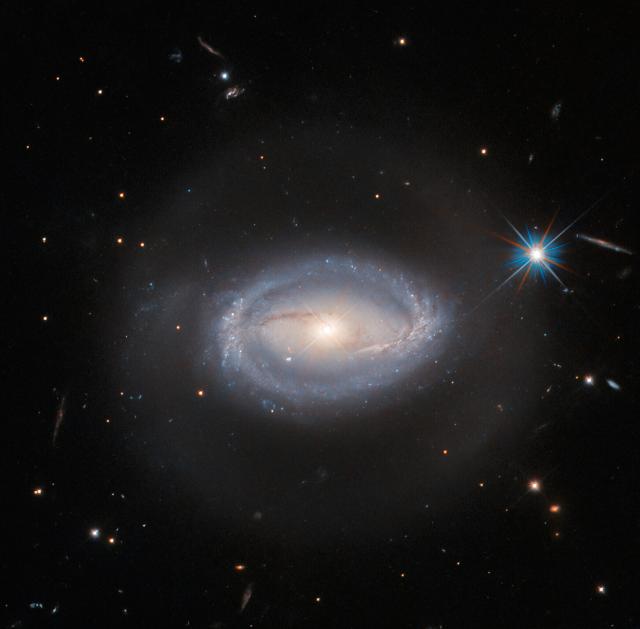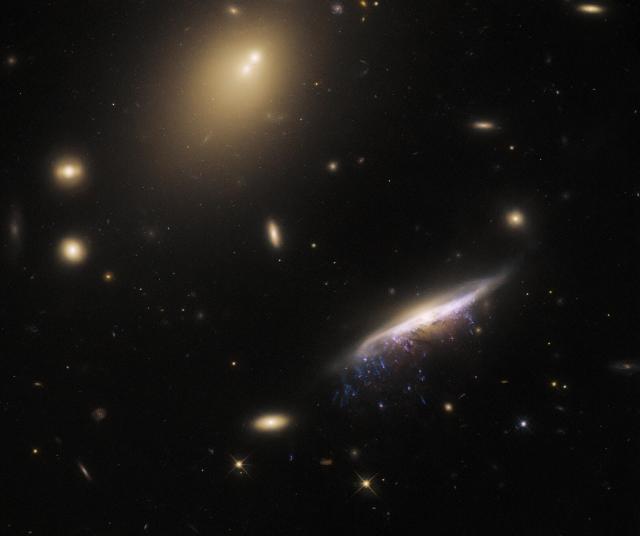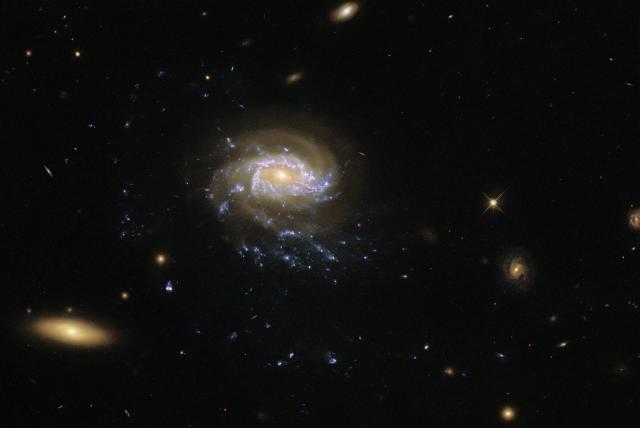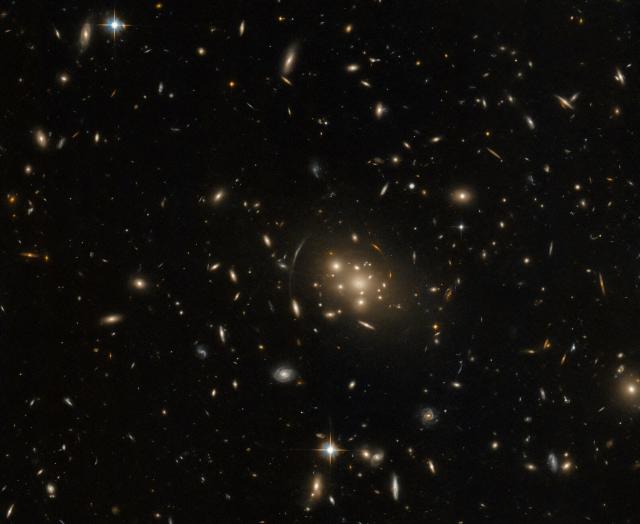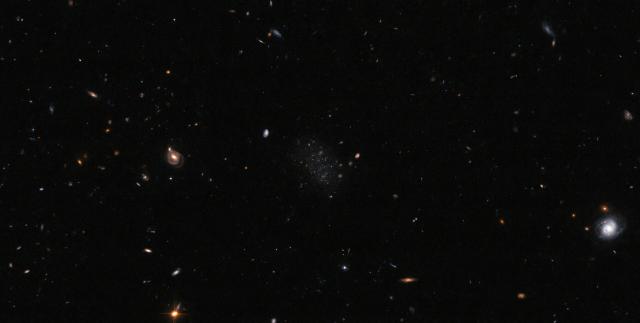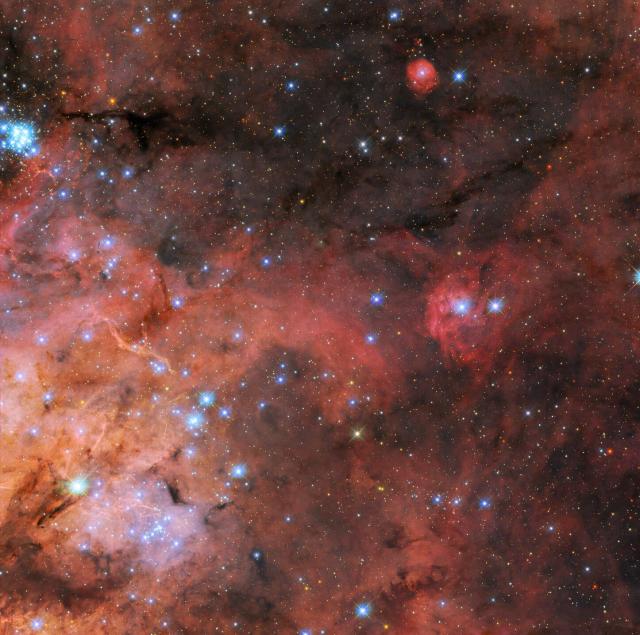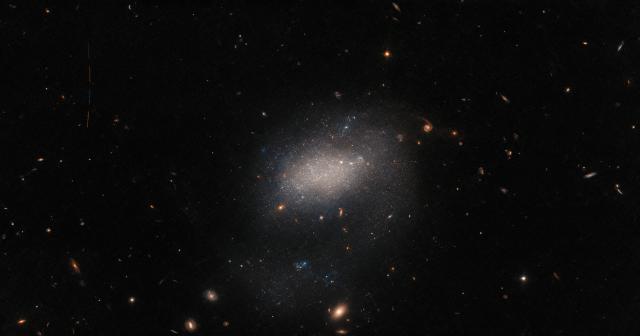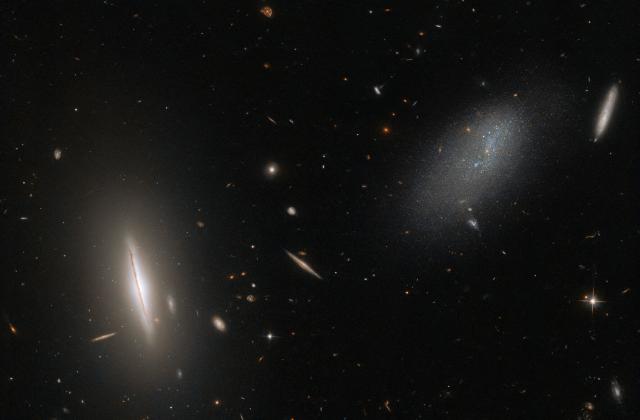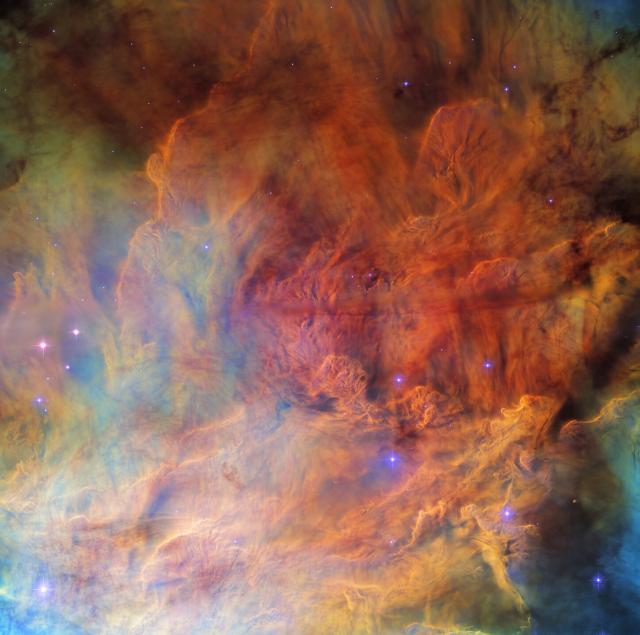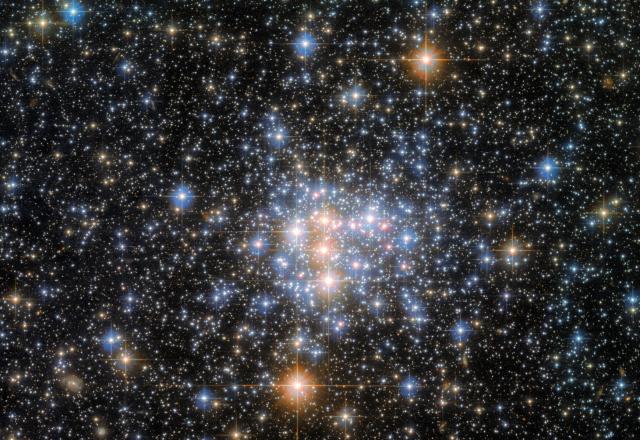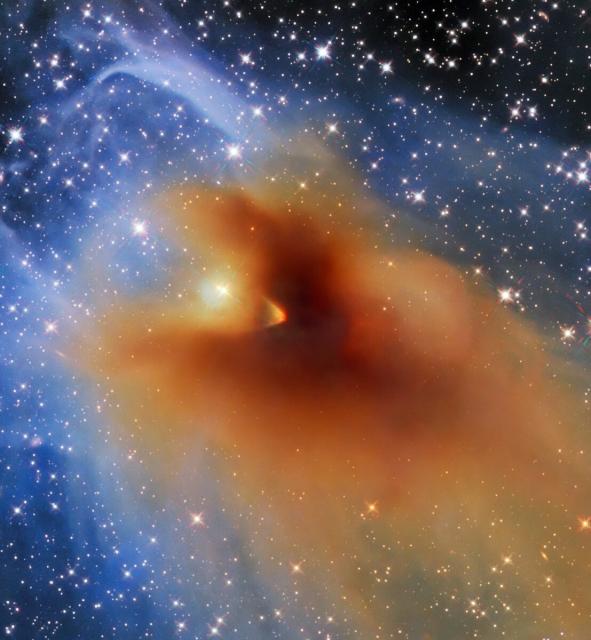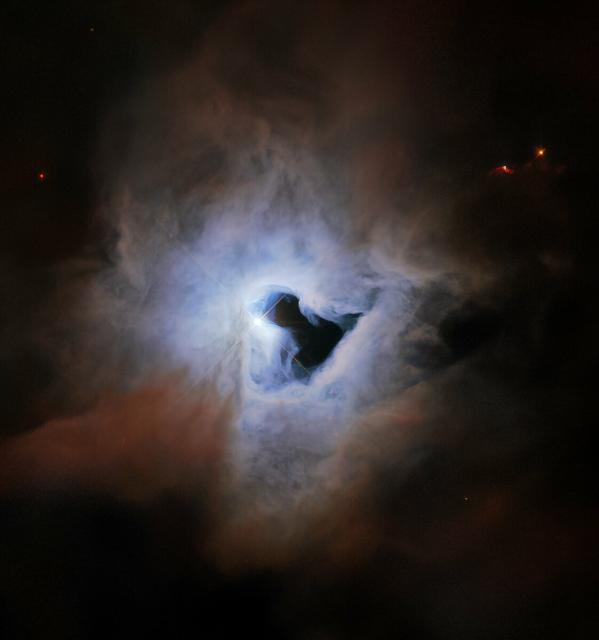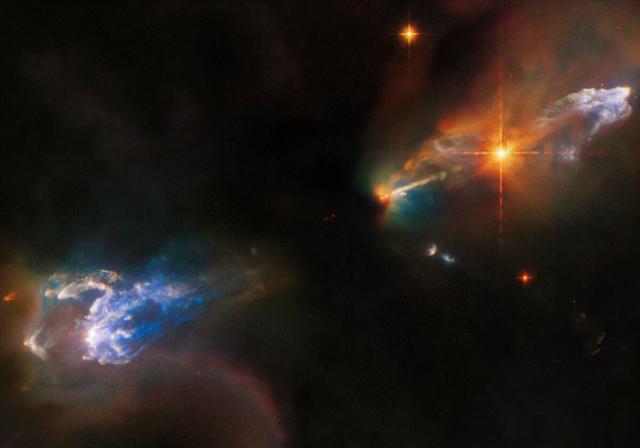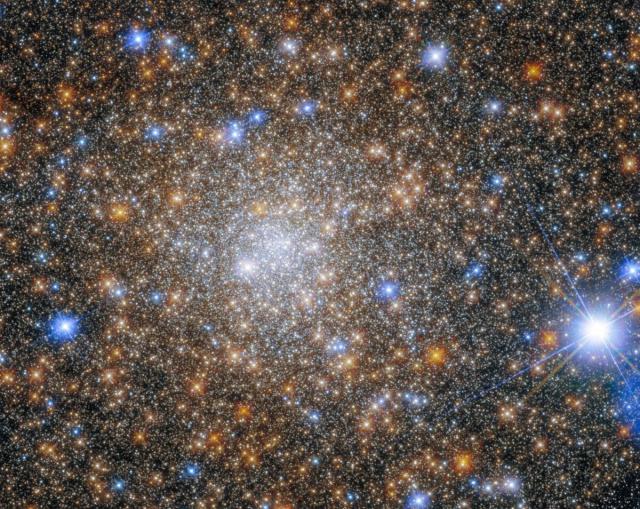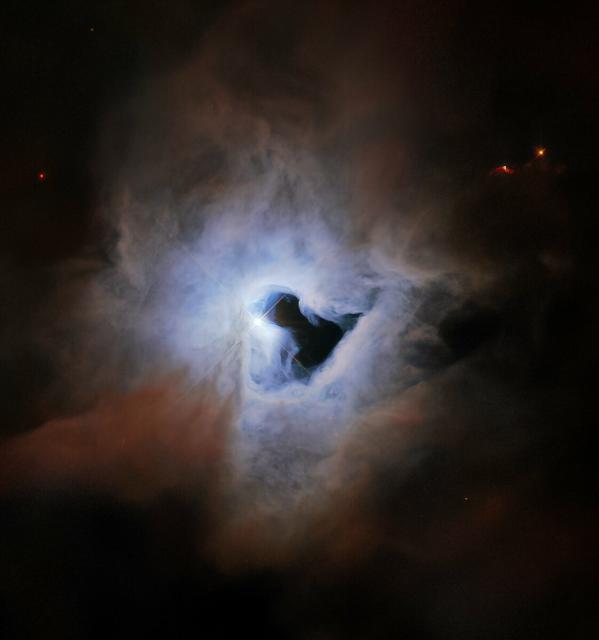Search
Items tagged with: hubblefriday
The glowing, ghostly galaxy in this #HubbleFriday image is called NGC 6684.
Located 44 million light-years from Earth, it resides in the constellation Pavo! Find out more: go.nasa.gov/3OqgnUO
#Hubble
Hubble Sees Galaxy in a Ghostly Haze
The lenticular galaxy NGC 6684 bathes this image from the NASA/ESA Hubble Space Telescope in a pale light.Andrea Gianopoulos (NASA)
It's #HubbleFriday time!
This week's new image shows the globular cluster NGC 6652. Globular clusters are roughly spherical groups of stars held together by their mutual gravitational attraction.
NGC 6652 is about 30 million light-years away: go.nasa.gov/3Oi5MLD
#Hubble
Hubble Glimpses a Glitzy Galactic Cluster
The glittering, glitzy contents of the globular cluster NGC 6652 sparkle in this star-studded image from the NASA/ESA Hubble Space Telescope.Andrea Gianopoulos (NASA)
Kick off the weekend with a relaxing view of the tranquil galaxy UGC 12295.
Shining in this new #HubbleFriday image, UGC 12295 is 192 million light-years away in the constellation Pisces.
Discover more about this image: go.nasa.gov/3rN4nFd
#Hubble
Hubble Peers at a Tranquil Galaxy
The tranquil spiral galaxy UGC 12295 basks leisurely in this image from the NASA/ESA Hubble Space Telescope.Andrea Gianopoulos (NASA)
FYI the hashtag #HubbleFriday is throwing errors now: 403 connection refused.
social.beachcom.org/tags/Hubbl…
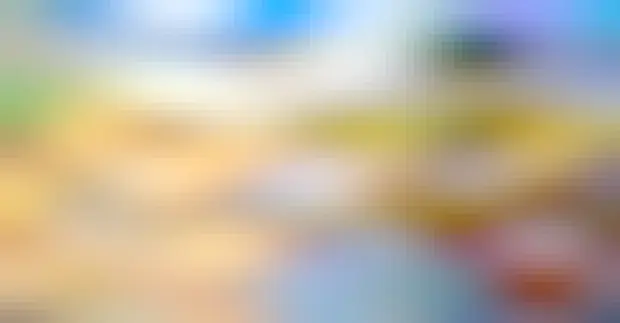
Social::Beach
Mostly german speaking, facts based instance in support of the Mastodon network.Mastodon hosted on social.beachcom.org
Just checking in! 👀
Hubble sometimes checks in on our galactic neighbors, like the one featured in this #HubbleFriday view.
Known as ESO 174-1, this galaxy contains a bright cloud of stars, and a faint, meandering tendril of dark gas and dust: go.nasa.gov/46oEnjv
#Hubble
Hubble Checks in on a Galactic Neighbor
The highly irregular galaxy ESO 174-1, which resembles a lonely, hazy cloud against a backdrop of bright stars, dominates this image from the NASA/ESA Hubble Space Telescope.Andrea Gianopoulos (NASA)
Bound together ✨
Globular clusters, like the one seen in this #HubbleFriday image, are collections of tens of thousands of stars bound by their mutual gravitational attraction.
This cluster is NGC 6544, which is about 8,000 light-years away: go.nasa.gov/3XkhXeZ
#Hubble
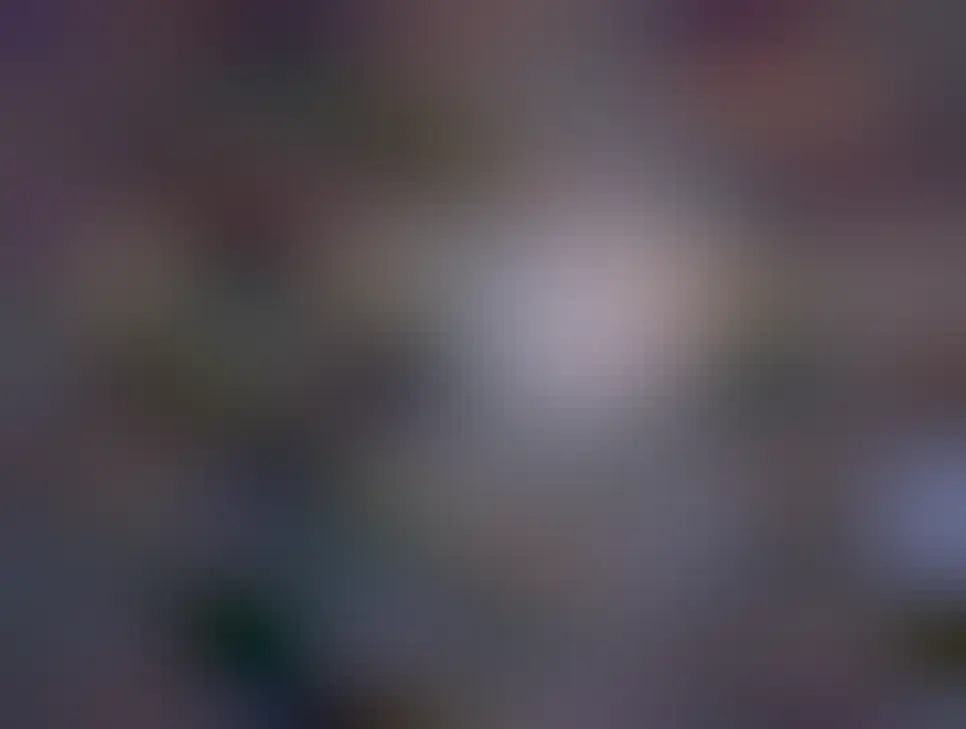
Hubble Glimpses a Glistening Cluster
The teeming stars of the globular cluster NGC 6544 glisten in this image from the NASA/ESA Hubble Space Telescope.Andrea Gianopoulos (NASA)
Have a happy #HubbleFriday!
This image shows the galaxy NGC 7292, which resides about 44 million light-years away.
NGC 7292 is irregular, meaning that it lacks the distinct spiral arms or elliptical shape that some galaxies have: go.nasa.gov/42EDDna
#Hubble
Hubble Captures a Billowing Irregular Galaxy
The galaxy NGC 7292 billows across this image from the NASA/ESA Hubble Space Telescope.Andrea Gianopoulos (NASA)
A "jellyfish" galaxy swims through this #HubbleFriday image!
Known as J0206, its "tentacles" are long tendrils of star formation that trail behind the galaxy's disk.
Read more: go.nasa.gov/3oWoe3M
#Hubble
Hubble Observes a Cosmic Sea Creature
The jellyfish galaxy JO206 trails across this image from the NASA/ESA Hubble Space Telescope.Andrea Gianopoulos (NASA)
About 26,000 light-years away, the globular star cluster NGC 6325 shines in this #HubbleFriday view.
Globular clusters are tightly bound collections of stars that contain anywhere from tens of thousands to millions of members: go.nasa.gov/3WetrQu
#Hubble
Hubble Peers into a Glistening Star Cluster
The densely packed globular cluster NGC 6325 glistens in this image from the NASA/ESA Hubble Space Telescope.Andrea Gianopoulos (NASA)
What's better than one galaxy? A whole cluster of them!
This #HubbleFriday image features a galaxy cluster about nine billion light-years away! Explore more: go.nasa.gov/3M5WrWi
#Hubble
Hubble Captures a Light-Bending Galaxy Cluster
A vast galaxy cluster lurks in the center of this image from the NASA/ESA Hubble Space Telescope.Andrea Gianopoulos (NASA)
650 million light-years away, the galaxy JO175 shines in this #HubbleFriday view!
JO175 is classified as a "jellyfish galaxy" due to the tendrils of star-forming gas and dust that trail behind it.
Find out more: go.nasa.gov/3pfV9zT
#Hubble
Hubble Views Striking Starry Tendrils
The jellyfish galaxy JO175 appears to hang suspended in this image from the NASA/ESA Hubble Space Telescope.Andrea Gianopoulos (NASA)
Galaxy clusters are among the largest objects in the universe!
Studying them helps us learn more about the distribution of mysterious dark matter, which makes up most of a galaxy cluster's mass.
This #HubbleFriday view shows galaxy cluster ACO S520: go.nasa.gov/3LCZyFZ
#Hubble
Hubble Captures an Elusive Galaxy Cluster
A menagerie of interesting astronomical finds are visible in this image from the NASA/ESA Hubble Space Telescope.Andrea Gianopoulos (NASA)
Take a look 260 million light-years away!
That's the distance to galaxy UGC 678, which shines in this week's #HubbleFriday image.
Find out more about this barred spiral galaxy: go.nasa.gov/3KV6611
#Hubble
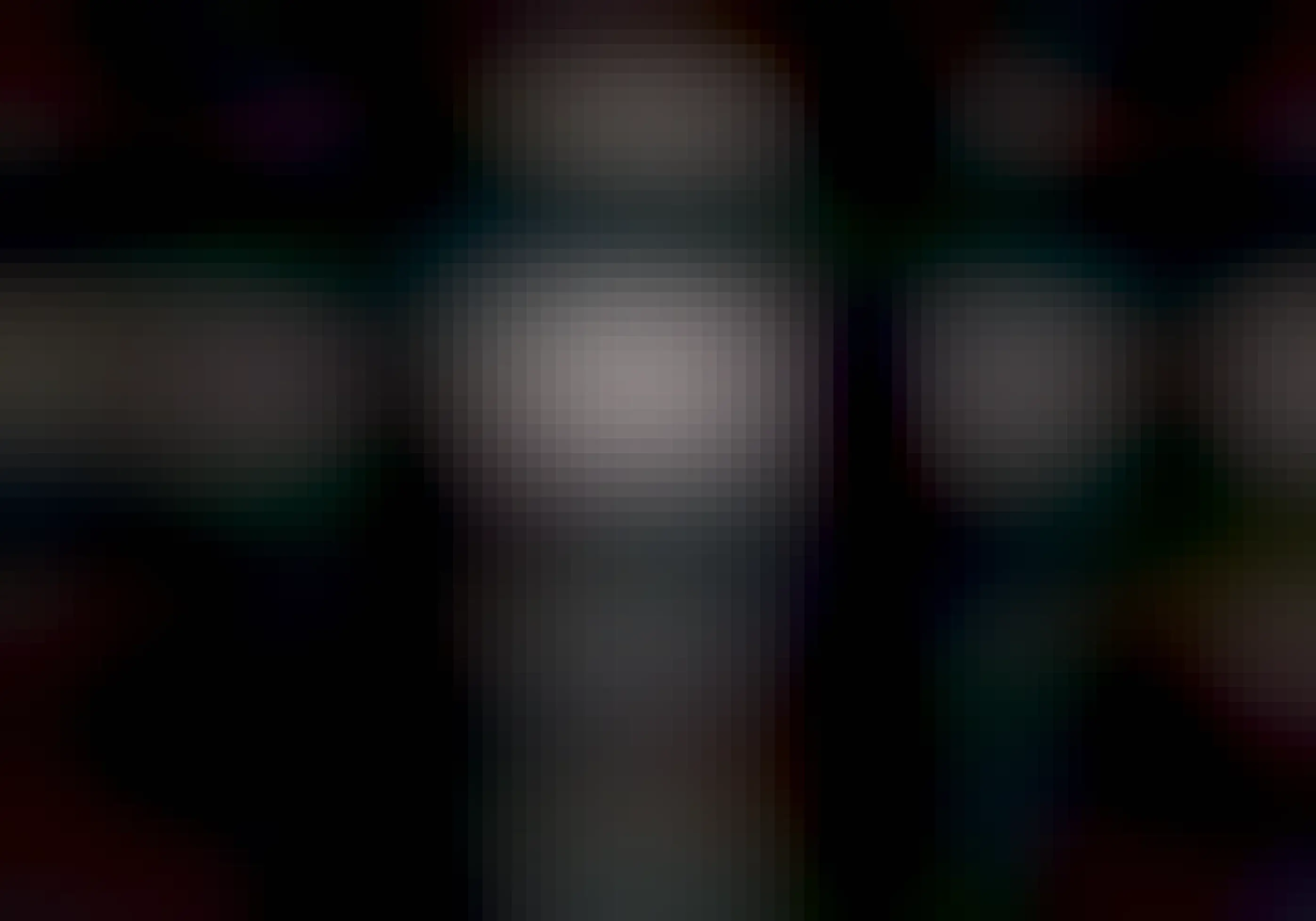
Hubble Spotlights a Swirling Spiral
The barred spiral galaxy UGC 678 takes center stage in this image from the NASA/ESA Hubble Space Telescope.Andrea Gianopoulos (NASA)
Have a stellar #HubbleFriday! ⭐
This image showcases the globular cluster NGC 2419. Globular clusters are roughly spherical groupings of stars bound together by their mutual gravitational attraction.
Explore more: go.nasa.gov/3UgX9TY
#Hubble
Hubble Spies a Multi-Generational Cluster
This image from the NASA/ESA Hubble Space Telescope shows the globular star cluster NGC 2419.Andrea Gianopoulos (NASA)
About 390 million light-years away, the galaxy Z 229-15 shines in this #HubbleFriday image!
Its luminous heart is caused by a disk of material heating as it swirls toward the black hole at the galaxy's core: go.nasa.gov/40uKG1z
#Hubble
Hubble Views an Intriguing Active Galaxy
This luminous image from the NASA/ESA Hubble Space Telescope shows Z 229-15, a celestial object that lies about 390 million light-years from Earth in the constellation Lyra.Andrea Gianopoulos (NASA)
Welcome to the galaxy JW100.
Located about 800 million light-years away, it resides in the constellation Pegasus.
Seen at the lower right of this #HubbleFriday image, JW100 is known as a jellyfish galaxy because of its "tendrils" of star-forming gas: go.nasa.gov/40fgqHB
#Hubble
Hubble Snaps a Galactic Jellyfish
Streams of star-forming gas dripping from the disk of galaxy JW100 are formed by a process called ram pressure stripping.Andrea Gianopoulos (NASA)
The hazy patch of stars on the right side of this image is actually a whole galaxy!
Seen in this #HubbleFriday view, the dwarf galaxy UGCA 307 resides about 26 million-light years away. The red bubbles of gas mark regions of recent star formation: go.nasa.gov/3z4ILop
#Hubble
Hubble Sees a Diminutive Dwarf Galaxy
UGCA 307 hangs against an irregular backdrop of distant galaxies in this image from the NASA/ESA Hubble Space Telescope.Andrea Gianopoulos (NASA)
Happy #HubbleFriday!
This week’s image shows the galaxy NGC 5486, located 110 million light-years away in the constellation Ursa Major.
Pink wisps of star formation are seen threaded through NGC 5486, standing out from the galaxy’s diffuse core: go.nasa.gov/3ZSGWpO
#Hubble
Hubble Spots a Star-Forming Spiral
The irregular spiral galaxy NGC 5486 hangs against a background of dim, distant galaxies in this image from the NASA/ESA Hubble Space Telescope.Andrea Gianopoulos (NASA)
#WorldWildlifeDay 🤝 #HubbleFriday
This image shows a "jellyfish" galaxy called JO201.
As jellyfish galaxies move through space, gas is slowly stripped away – forming trails that look like tendrils illuminated by clumps of star formation!
Read more: go.nasa.gov/3YkC9Mu
#Hubble
Hubble Peers at a Galactic Seascape
A “jellyfish galaxy” with trailing tentacles of stars hangs in inky blackness in this image from the NASA/ESA Hubble Space Telescope.Andrea Gianopoulos (NASA)
Cosmic contortions!
This #HubbleFriday image includes a cluster near the center that appears to be "stretching" nearby galaxies.
The cluster is a gravitational lens, magnifying the light from background objects with its powerful gravitational field: go.nasa.gov/3m2fNSP
#Hubble
Hubble Observes Cosmic Contortions
A massive galaxy cluster in the constellation Cetus dominates the center of this image from the NASA/ESA Hubble Space Telescope.Andrea Gianopoulos (NASA)
On a collision course 💥
This week’s #HubbleFriday image shows a spectacular trio of galaxies set to collide and eventually merge into one larger galaxy.
The galaxies, known to astronomers as SDSSCGB 10189, are within 50,000 light-years of one another: go.nasa.gov/3Z0YVK3
#Hubble
Hubble Views a Merging Galactic Trio
This Hubble Space Telescope image holds three galaxies set on a collision course. They will eventually merge into a single larger galaxy, distorting one another’s spiral structure through mutual gravitational interaction in the process.Andrea Gianopoulos (NASA)
In the very middle of this #HubbleFriday image is a galaxy... but you might have to look very closely to find it.
The newly discovered dwarf galaxy Donatiello II is seen nestled among a smattering of distant stars and even more distant galaxies: go.nasa.gov/3DUC4bb
#Hubble
Hubble Spots an Elusive Galaxy
Right in the middle of this image taken with the NASA/ESA Hubble Space Telescope lies the newly discovered dwarf galaxy known as Donatiello II.Andrea Gianopoulos (NASA)
Welcome to a "star factory"!
This #HubbleFriday view shows the Tarantula Nebula, the brightest region of starbirth in our galactic neighborhood.
About 161,000 light-years away, it's within the Large Magellanic Cloud – a satellite galaxy to our Milky Way: go.nasa.gov/3RsBMOh
#Hubble
Hubble’s New View of the Tarantula Nebula
A snapshot of the Tarantula Nebula (also known as 30 Doradus) is featured in this image from the NASA/ESA Hubble Space Telescope.Andrea Gianopoulos (NASA)
Have a stellar #HubbleFriday!
This week's image shows the bright star V 372 Orionis, along with a smaller companion star in the upper left.
Both stars call the Orion Nebula home – which is a massive region of starbirth about 1,450 light-years away: go.nasa.gov/3DkX6zq
#Hubble
Hubble Views a Stellar Duo in Orion Nebula
The bright variable star V 372 Orionis takes center stage in this image from the NASA/ESA Hubble Space Telescope.Andrea Gianopoulos (NASA)
A cosmic treasure trove! 🤩
This #HubbleFriday contains lots of astronomical marvels: the hazy galaxy UGC 7983, more distant galaxies, and even an asteroid, seen as four streaks of light on the upper left (from four exposures taken by Hubble).
For more: go.nasa.gov/3ZNEMZp
#Hubble
Hubble Captures Cosmic Treasure Trove
A host of astronomical objects are scattered across this image from the NASA/ESA Hubble Space Telescope. Background galaxies ranging from stately spirals to fuzzy ellipticals are strewn across the image.Andrea Gianopoulos (NASA)
Happy #HubbleFriday!
This week's image shows a galactic gathering. On the right, the faint, sparse galaxy LEDA 48062 shines from 30 million light-years away. On the left is a more sharply defined galaxy called UGC 8603: go.nasa.gov/3XaJ9ff
#Hubble
Hubble Visits Galactic Neighbors
This image from the NASA/ESA Hubble Space Telescope features the galaxy LEDA 48062 in the constellation Perseus.Andrea Gianopoulos (NASA)
Welcome to the first #HubbleFriday of 2023!
This image features the star cluster NGC 6355, which resides within our own Milky Way Galaxy at a distance of about 50,000 light-years.
Read more: go.nasa.gov/3X5SSmw
#Hubble
Hubble Gazes at Colorful Cluster of Scattered Stars
The scattered stars of the globular cluster NGC 6355 are strewn across this image from the NASA/ESA Hubble Space Telescope.Andrea Gianopoulos (NASA)
This #HubbleFriday view is pretty *stellar*! ⭐
Dive into this spectacular image of a portion of the gigantic Lagoon Nebula. The stars seen throughout are part of the cluster NGC 6530, located about 4,350 light-years away!
For more information: go.nasa.gov/3G7vpfr
#Hubble
Hubble Views a Star-Studded Cosmic Cloud
A portion of the open cluster NGC 6530 appears as a roiling wall of smoke studded with stars in this image from the NASA/ESA Hubble Space Telescope.Andrea Gianopoulos (NASA)
"Small" but mighty!
Inside the Small Magellanic Cloud, a satellite galaxy to our Milky Way, is the star cluster NGC 376.
Seen in this #HubbleFriday view, NGC 376 is made of stars that are loosely bound together by gravity: go.nasa.gov/3BmGKoN
#StarrySights
#Hubble
Hubble Captures a Glittering Neighbor
This image from the NASA/ESA Hubble Space Telescope captures a small portion of the Small Magellanic Cloud.Andrea Gianopoulos (NASA)
Merge ahead ⚠️
This #HubbleFriday image showcases the peculiar galaxy merger known as Arp-Madore 417-391.
At 671 million light-years away, this merger is the result of two galaxies that were distorted by gravity and twisted together into a ring: go.nasa.gov/3Vphfe5
#Hubble
Hubble Hunts an Unusual Galaxy
The galaxy merger Arp-Madore 417-391 steals the spotlight in this image from the NASA/ESA Hubble Space Telescope.Andrea Gianopoulos (NASA)
Hubble Views a Billowing Cosmic Cloud
A small, dense cloud of gas and dust called CB 130-3 blots out the center of this image from the NASA/ESA Hubble Space Telescope.Andrea Gianopoulos (NASA)
Hubble Peers at Mysterious Cosmic ‘Keyhole’
This peculiar portrait from the NASA/ESA Hubble Space Telescope showcases NGC 1999, a reflection nebula in the constellation Orion.Andrea Gianopoulos (NASA)
Hubble Views a Turbulent Stellar Nursery
The lives of newborn stars are tempestuous, as this image of the Herbig-Haro objects HH 1 and HH 2 from the NASA/ESA Hubble Space Telescope depicts.Andrea Gianopoulos (NASA)
Hubble Eyes a Brilliant Star Cluster
This image taken with the NASA/ESA Hubble Space Telescope shows Terzan 1, a globular cluster that lies about 22,000 light-years from Earth in the constellation Scorpius.Andrea Gianopoulos (NASA)
Hubble Peers at Mysterious Cosmic ‘Keyhole’
This peculiar portrait from the NASA/ESA Hubble Space Telescope showcases NGC 1999, a reflection nebula in the constellation Orion.Andrea Gianopoulos (NASA)
